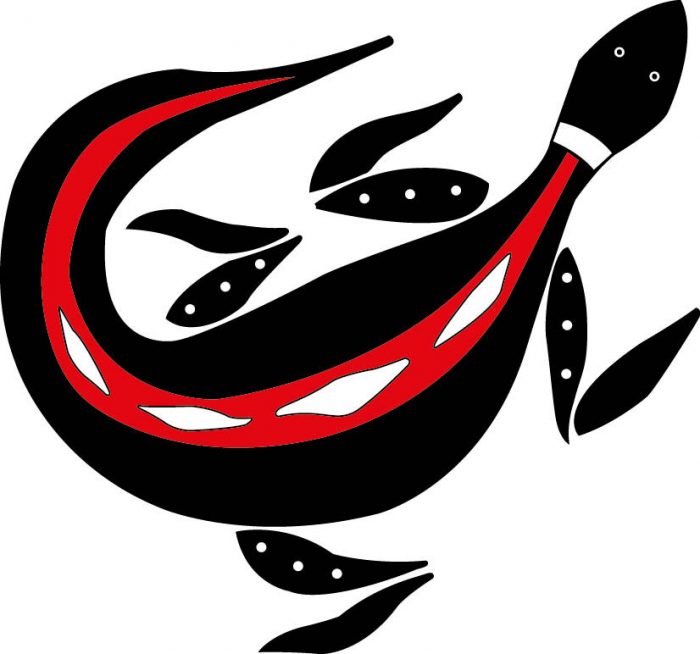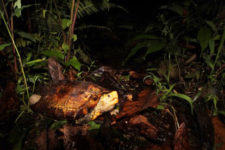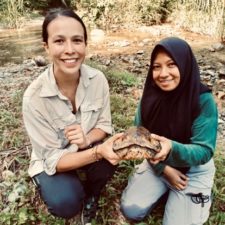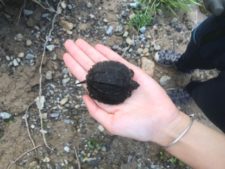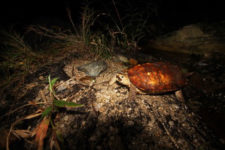Note, this field work formed the basis for Angela’s Masters thesis.
By Angela Simms
I wasn’t sure what to expect on the first night searching for the Sulawesi Forest Turtle. As little as 30 minutes into the stream walk, our local guide spots a large male perched on the edge of the clear shallow flowing stream, the yellow head illuminating brightly from our head torch. The first of the Critically Endangered turtles to be part of my radio telemetry project. Within two weeks we manage to pluck up twenty adults with even sex ratios – a field researchers dream when fate works out in your timelines favour. What was even more amazing was the ease of finding these Forest Turtles, merely just stumbling across turtles that were sitting in the shallow streams. I was fortunate to observe many turtles in this stream system but I know that this isn’t the case for most of their range.
I had read how intensive the deforestation was throughout Indonesia, threatening much of its incredibly unique biodiversity. Being within Wallacea, Sulawesi is home to a high proportion of endemic species, including the Sulawesi Forest Turtle (Leucocephalon yuwonoi). In addition to deforestation, it is recognised there is an Asian turtle crisis largely driven by overexploitation. Placed within it’s own monotypic genus, Leucocephalon, it would be a significant loss to lose a species and genus all together. What is scarier is how little we know about Leucocephalon. I found it baffling this species lays just one large egg per clutch – oh boy – what a strange reproductive strategy right there.
I was determined to get some good ecological data that will hopefully help towards effective conservation management with the guidance and support from my supervisors. I went out and tracked the turtles 6 days a week over 4 months, mornings and evenings with the occasional hot afternoon track. I could sense my brain turning part turtle, starting to get a grasp of each of their behavioural traits and understanding what refuges they seem to like. Treks in the daily 30°C (86°F) and ~90% humidity, never have I sweated so much in my life. I realised the waterproof surveying paper wasn’t just for rain, it was also to accommodate for my dripping sweat as I’m writing. Fieldwork could not have been achieved without the help and company of my amazing field team. My research assistant, Fatmah, a young and enthusiastic graduate and our guide Warimin, previously a local turtle collector turned conservationist. Fieldwork was also combined with amazing Indonesian food, a few local weddings, plenty of herping, many trips to the surrounding beaches and waterfalls, and experiences I am grateful for!
Understanding the Sulawesi Forest Turtle doesn’t just stop at my Masters project. On my last visit to Tadulako University with collaborators Dr Fadly Tantu and Dr Jusri Nilawati, I was excited to hear of three of their Masters students conducting further studies on the species. Combined with the Turtle Survival Alliance’s ex situ efforts, I’m thrilled to know this ecological void of understanding the Sulawesi Forest Turtle has a wonderful, diverse team filling in the gaps.
The next step is to convert my Masters thesis to a paper. A draft paper is currently being revised. Watch this space!
Thanks to the Turtle Survival Alliance and Macquarie University for funding and support. Many thanks to all my collaborators and field assistants, all of which are acknowledged in my thesis.
You can follow Angela and see her photos from the field on Instagram and Twitter.
